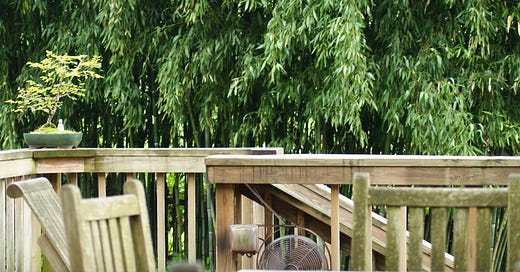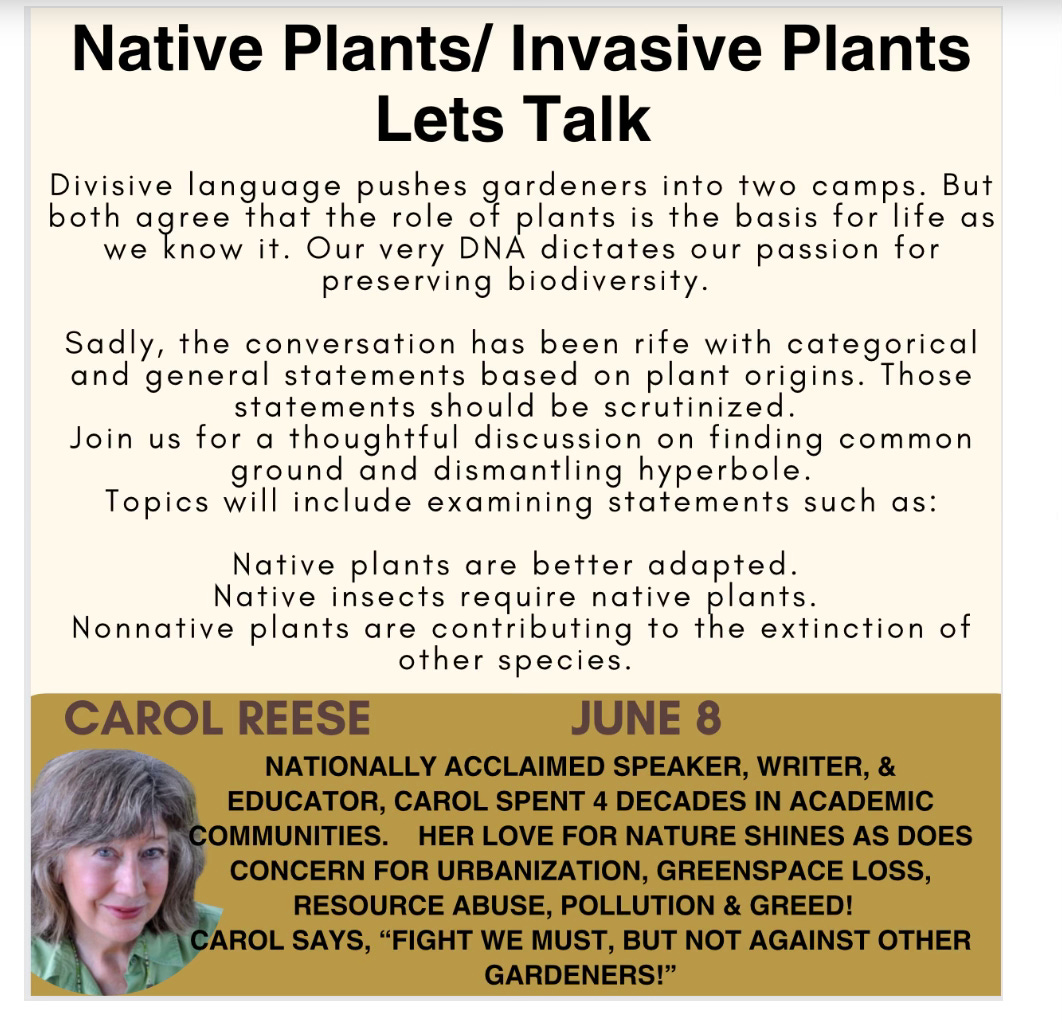Yesterday, Bob and I stood in the glaring sun, looking at the empty space that used to be our beloved, shady, private party deck. He’d just come home from the beach, so this was a shock to him.
Back in the 90s, a bamboo hedge screened us from the young family of next-door neighbors. This space, with its bamboo walls and a crazy, swirling brick patio, was super cool. From an arbor, one of those plastic woven spaghetti lights from the 70s gave the place a warm glow at night. Thrift store butterfly chairs and an aluminum glider were rarely enough; folks sat on upturned stumps and flower pots.
On any Friday night, long-haired earth-loving gardeners mingled with precise journalists who’d shucked their pressed slacks for shorts. Bob, his boyfriend Eric, and our dog Jack claimed a place by the grill. Tom Waits drifted through the screen door, chopped a bit by the electric fan.
I can think of a dozen or so who slept on this deck. Planted as it was, passersby couldn’t see in from the street. It was an extension of the house: party deck in the evening, my writing space in the mornings, and bedroom, as needed. People who were so inclined could walk out of the house naked to the outdoor shower tucked around the corner.
The clumping bamboo hedge I planted and have loved has to be cut to the ground. I must say it has been really well pruned for decades, so this hurts me. But it needs rejuvenation and has had Virginia Creeper and Carolina moonseed vine traipsing through it. Those native thuggish plants made it all look messy. Getting those out had proven impossible, even with harsh herbicides. While Bob was away, Jesse, Tom, and I cut the bamboo down, taking the space from private and shady to open and sunny.
After that, we have to choose between two options.
We could let it come back, taking care of the vines in the process. It would fill back in by the end of summer. That’s the cheapest, easiest option.
We could kill it and start over with an entirely new plant and look.
I know some folks will say immediately, ‘Bamboo is bad! Kill all the bamboo! Bamboo is invasive! That’s a generalization that’s based on experience or observation of one genera. There are a thousand species of bamboo and plenty of them clump. (Our native bamboo, which we rarely see in gardens, does, in fact, run like crazy. )
That myth doesn’t even enter into this discussion. Since this is Bob's space, off his kitchen, he needed to say which way we should go. We stood in the glaring sun, evaluating. The decision came quickly. It’s time for a change. Gardens, plants, and people are living things. Our needs and abilities change, too.
Sometimes, when I walk into Riverbanks Botanical Garden, a public garden that I designed years ago, friends or even new gardeners will ask if it makes me sad to see things that I had planted were taken out.
Usually, the answer is no. I wrote a whole chapter in Garden Disrupters as a modern-day walk-through of the Garden.
I called the chapter Magnolia Years, a sort of play on the term ‘Dog Years,’ comparing some plants’ extremely long lifespans to our lives. It’s a sentimental
chapter. But the last chapter of the book has the same title. It’s a realistic and frank look at racism in the garden world. But it’s also about changes in thinking and changes in the ways things have been and should be.
Sometimes we forget how things were. Case in point: I saw Doug Tallamay, the guru of native plant writing, give a presentation last week. He’s a great speaker—an important gateway speaker who draws folks in who’ve never considered many of these ideas into his way of thinking. But the presentation was also full of generalizations. For example, he says horticulture “used to be 100% about aesthetics” with no consideration of conservation or wildlife. That massive generalization dismisses the generations of gardeners and designers in one uninformed swoop.
I understand the nature of a one-hour talk designed for a general audience lends itself to these things. I applaud his presentation, but I worry that some, many in the audience, don’t realize that they need to dig deep into the subject before grasping onto generalized phrases.
If you want to dig deeper, understand the history and effective steps forward, and look beyond divisive myths and memes of the popular native plant movement, join us for this workshop. There are only three spaces left.










Share this post